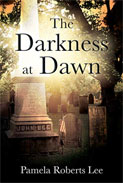
 |
Members of a group of Puritan settlers en route to Boston in 1634, John Lee and Richard Hawkes find their fates intertwined when John spies the despicable Hawkes stealing a gold chalice in the midst of a storm. This incident begins a decades-long, dangerous war between the two. Agreeing never to mention the incident if the chalice is returned, John hopes to keep Grace, a fellow ward of Puritan William Westwood, safe from Hawkes. Though Hawkes escapes the repercussions of having stolen the chalice, he has no intention of living a noble and chaste life. Unwilling to break his vow because of his deeply held convictions, John is forced to watch helplessly as Hawkes continues to inflict his crimes upon the community and take advantage of good people through the years. John suffers tremendous guilt over the information he feels would give the community both the clarity and knowledge needed to rid themselves of Hawkes, yet he feels compelled to withhold. Will John ever find a way to bring the evil Hawkes to justice for his crimes without compromising his values?
This story of good vs. evil set in Puritan New England is a sweeping look at life in the early years of American settlement. The author spins an intriguing tale that encompasses issues such as the Indian Wars, Puritan Christianity, race relations between the Native Americans and early settlers, and witchcraft. The depth of information is impressive concerning life in New England during the 1600s. Not only does the book bring this time period to life through well-written, informative passages about the Puritans' day-to-day life, its beautiful descriptions of the pristine, unmarred lands of early America even further enhance one's understanding of this time. The pious John Lee and dastardly Richard Hawkes are the epitome of good vs. evil and perfect counterparts to carry the thematic elements of the work. Many philosophical and theological concepts are argued through John's great heartbreak and inner struggle with his guilt at being powerless to stop Hawkes and his continued evil influence over the community.
Influenced by her grandfather's role as the family historian, Lee draws upon her interest in her own family's history for this first novel. In fact, protagonist John Lee is based on one of her ancestors, and it is a photograph of John Lee's monument, which the family erected in the 1800s, that appears on the cover of the novel. This connection between author and subject is another fascinating layer in this multi-layered work of fiction. There is truly a lot to like in Lee's novel. For example, as a historical work, the detailed information about life during the 1600s is exceptional. As a character study, the heart-wrenching guilt John struggles with as he tries to live up to his beliefs and maintain his integrity is rendered perfectly. As a study of Puritan Christianity, the book presents the tenets and beliefs of these early settlers in a comprehensive matter. Overall, it's a captivating, compelling story that grabs one's attention from the first and never lets up. This is an amazing offering for a debut novelist.
RECOMMENDED by the US Review